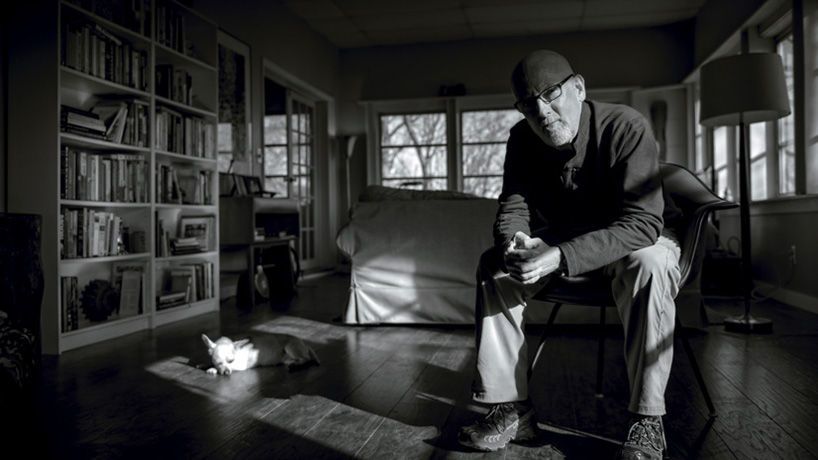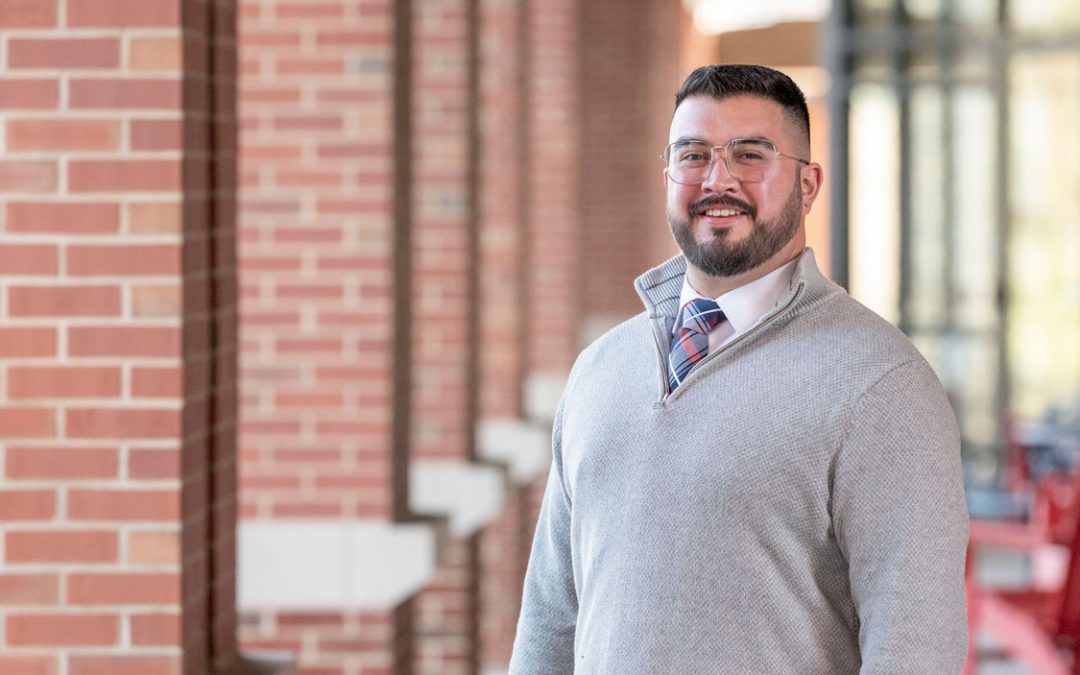
Author of eight books, Earl Swift drafts compelling narratives on topics ranging from forensic science, to the creation of America’s highway grid, to sea-level rise and to the last three Apollo missions – in “Across the Airless Wilds: The Lunar Rover and the Triumph of the Final Moon Landings,” released this past summer. (Photo by Mark Atkinson)
By Joe Cavato
How did you prepare for your journalism career while at UMSL?
I arrived planning to stick around for two years, get a slew of survey courses out of the way, then transfer to journalism school. But my first day on campus, I sought out the offices of The Current, and walked out with a story assignment. By the time I got my second, I knew that I’d found my people. I got my first training as a reporter and forged lifelong friendships on the paper’s staff.
Before long, I landed a job at the St. Louis Globe-Democrat that led to my getting the Globe’s summer reporting internship. That, in turn, convinced me that perhaps I didn’t need to go to journalism school – that the wiser course might be to learn about the world I’d be covering, rather than the mechanics of covering it. I decided to stay at UMSL and major in political science. It turned out to be a good call: when I graduated, the Globe offered me a full-time reporting job.
How do you find your inspiration and decide on a topic for a book?
My inspiration is that I like to eat. It’s unromantic to put it so plainly, but writing is a job like any other – if you require some mystical form of inspiration to do it, you’re going to go hungry. Inspiration does visit but almost always when you’re already elbows-deep in the work.
As for the topics I choose, I write the kind of stories I like to read. If I’ve thought the ideas through to the extent I should, others will want to read them, too.
Why a book about the lunar rover?
Because it’s a compelling story, with strong characters and lots of action and surprises along the way. On Apollo 11, Neil Armstrong and Buzz Aldrin never ventured more than 65 yards from their lunar module. Jump ahead two years to Apollo 15, you have Dave Scott and Jim Irwin climbing into the first lunar rover and driving more than 17 miles. They explored and conducted science over an area half the size of Manhattan. They climbed hundreds of feet up the side of a mountain as big as Kilimanjaro. All told, the crews of the last three missions drove more than 56 miles on the moon in what was essentially a 1969 General Motors product. The rover changed everything about Apollo.
What does UMSL mean to you?
UMSL offered whatever I asked of it – the community there gave me the room and encouragement to aim as high as I chose to, but success or failure was up to me. That was a real gift: you had to motivate yourself if you hoped to maximize your experience. I’ve worked with really smart, well-educated colleagues over the years but few who learned to work as hard as I did at UMSL. Over time, that’s proved a real advantage, a linchpin to my career. When it comes to telling you just how grateful I am to be an alum, I can’t find words big enough.
This story was originally published in the fall 2021 issue of UMSL Magazine. If you have a story idea for UMSL Magazine, email magazine@umsl.edu. Pick up a copy of “Across the Airless Wilds” on Swift’s website.














